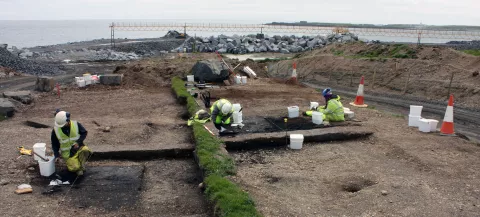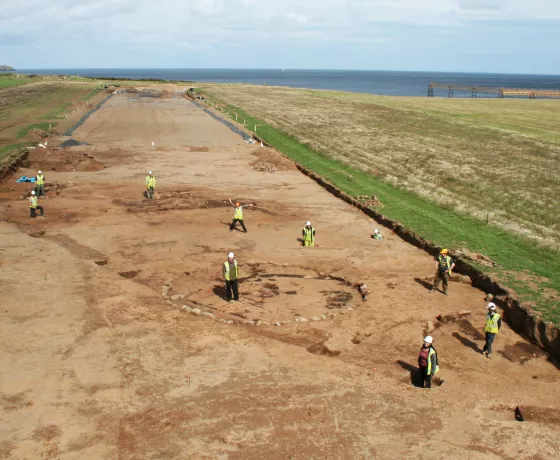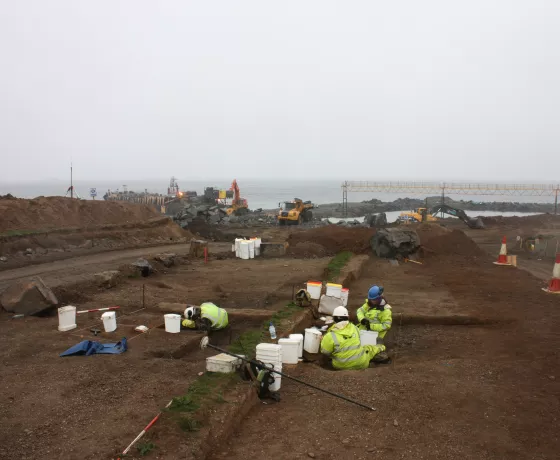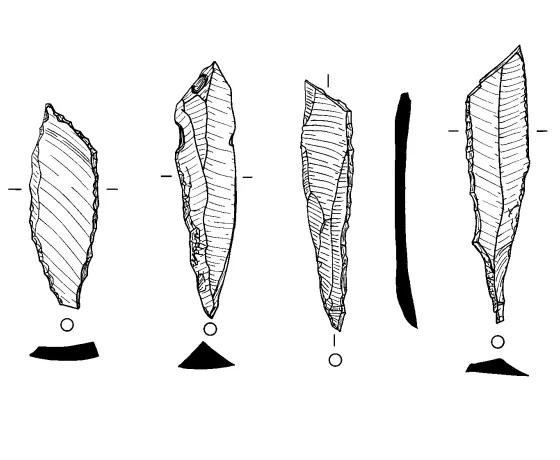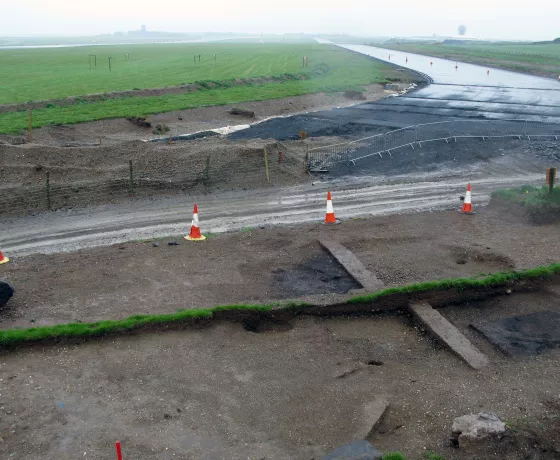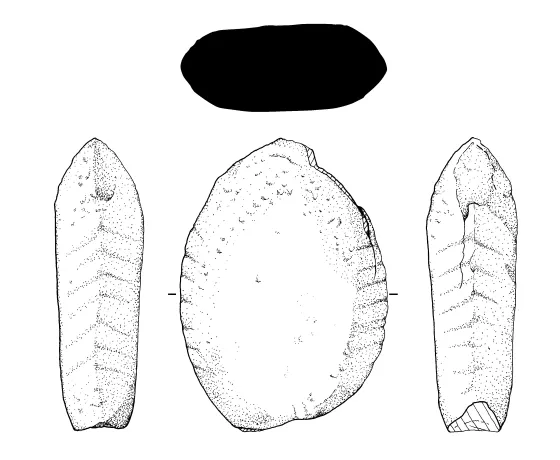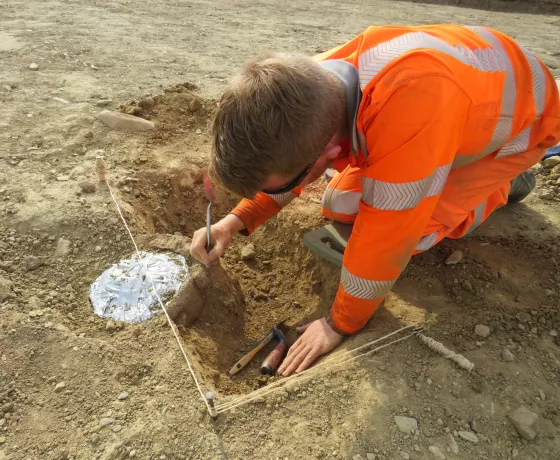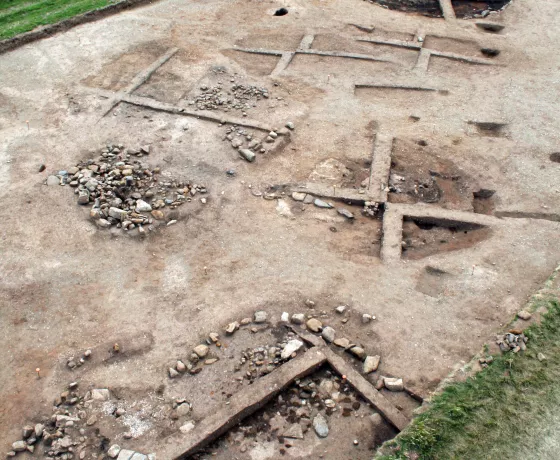Cass ny Hawin II Mesolithic House
During construction work associated with the lengthening of the runway at Ronaldsway Airport, on the Isle of Man, Oxford Archaeology discovered a middle Mesolithic house. A 7m-diameter pit in the ground, which seems to have contained a brush-wood floor, was surrounded by a ring of postholes – possibly footings for poles used to create a conical teepee-like structure.
The house burned down whilst still containing the objects that were used during its occupation (including 20,000 struck lithics, coarse stone tools and thousands of charred hazelnut shells), which formed a time capsule, providing a snapshot of life within the dwelling. This is useful for interpreting how the space in other similar houses, found in other parts of the British Isles might have been organised. These have often been occupied over greater durations and, consequently, the patterns of artefact distribution are superimposed, blurring interpretation.
The house has provided a good set of radiocarbon dates that show it to be a little over 10,000 years ago, making it the first evidence for settlement on the island. Indeed, it has been argued that these hunter-gatherers were pioneer colonisers, at around the time when Man was separated from the mainland by rising sea levels.

